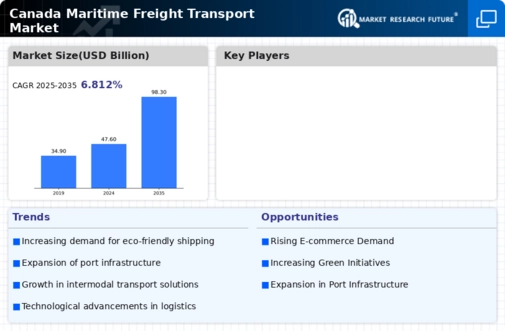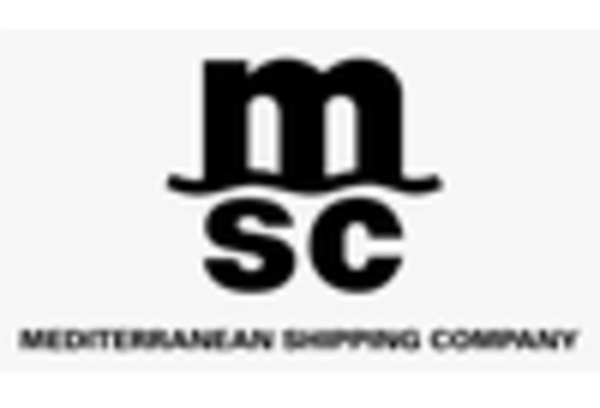Regulatory Framework Enhancements
The maritime freight-transport market in Canada is currently influenced by evolving regulatory frameworks aimed at improving safety and environmental standards. Recent legislative changes have introduced stricter emissions regulations, which may compel shipping companies to invest in cleaner technologies. This shift could lead to increased operational costs, but it also presents opportunities for innovation within the industry. The Canadian government has been proactive in aligning its regulations with international standards, which may enhance competitiveness. As a result, companies that adapt to these regulations may gain a market advantage, potentially increasing their share in the maritime freight-transport market.
Environmental Sustainability Pressures
The maritime freight-transport market in Canada faces growing pressures to adopt environmentally sustainable practices. Stakeholders, including consumers and regulatory bodies, are increasingly prioritizing sustainability, which may compel companies to reduce their carbon footprints. This shift could involve investing in alternative fuels and energy-efficient vessels. In 2025, it is anticipated that 30% of shipping companies will implement green technologies, driven by both regulatory requirements and market demand. As a result, the maritime freight-transport market may witness a transformation towards more sustainable operations, potentially enhancing its reputation and attracting environmentally conscious clients.
Technological Integration in Operations
The integration of advanced technologies in the maritime freight-transport market is reshaping operational efficiencies. Innovations such as blockchain for supply chain transparency and IoT for real-time tracking are becoming increasingly prevalent. These technologies can enhance cargo security and reduce delays, which are critical factors in maintaining competitiveness. In Canada, the adoption of such technologies is expected to increase operational efficiency by up to 15% over the next few years. This trend may lead to a more streamlined maritime freight-transport market, where companies that leverage technology effectively could see improved profit margins and customer satisfaction.
Infrastructure Investment and Development
Investment in port infrastructure is a critical driver for the maritime freight-transport market in Canada. The government has recognized the need for modernized facilities to accommodate larger vessels and increased cargo volumes. Recent funding initiatives aim to enhance port capabilities, which could lead to improved efficiency and reduced turnaround times. In 2025, it is projected that port capacity will increase by 20%, facilitating greater trade volumes. This development may attract more shipping lines to Canadian ports, thereby bolstering the maritime freight-transport market and contributing to economic growth.
Trade Agreements and Economic Partnerships
The maritime freight-transport market in Canada is significantly impacted by trade agreements and economic partnerships. Recent agreements, such as the Canada-United States-Mexico Agreement (CUSMA), have facilitated smoother trade flows, thereby increasing demand for maritime transport services. In 2025, the volume of goods transported via maritime routes is projected to rise by approximately 10%, driven by these agreements. This increase may lead to higher freight rates and expanded service offerings, as companies seek to capitalize on the growing trade volumes. Consequently, the maritime freight-transport market is likely to experience robust growth as trade relationships strengthen.

















Leave a Comment